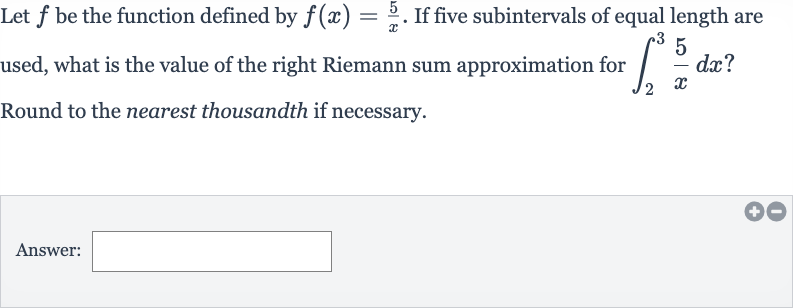Full solution
Q. Let be the function defined by . If five subintervals of equal length are used, what is the value of the right Riemann sum approximation for ? Round to the nearest thousandth if necessary.Answer:
- Calculate Subinterval Width: We need to calculate the right Riemann sum for the function from to using five equal subintervals. First, we find the width of each subinterval.The total interval length is . With five subintervals, each subinterval has a width of .
- Determine Right Endpoints: Next, we determine the -values at the right endpoints of each subinterval. Since we start at and each subinterval has a width of , the right endpoints are , , , , and .
- Evaluate Function at Endpoints: Now we evaluate the function at each of these right endpoints. This gives us the heights of the rectangles for the Riemann sum.
- Calculate Rectangle Areas: We calculate the area of each rectangle by multiplying the height by the width . The sum of these areas will give us the right Riemann sum approximation.
- Sum Up Areas: Perform the calculations for each term and sum them up.Area Area Area Area

